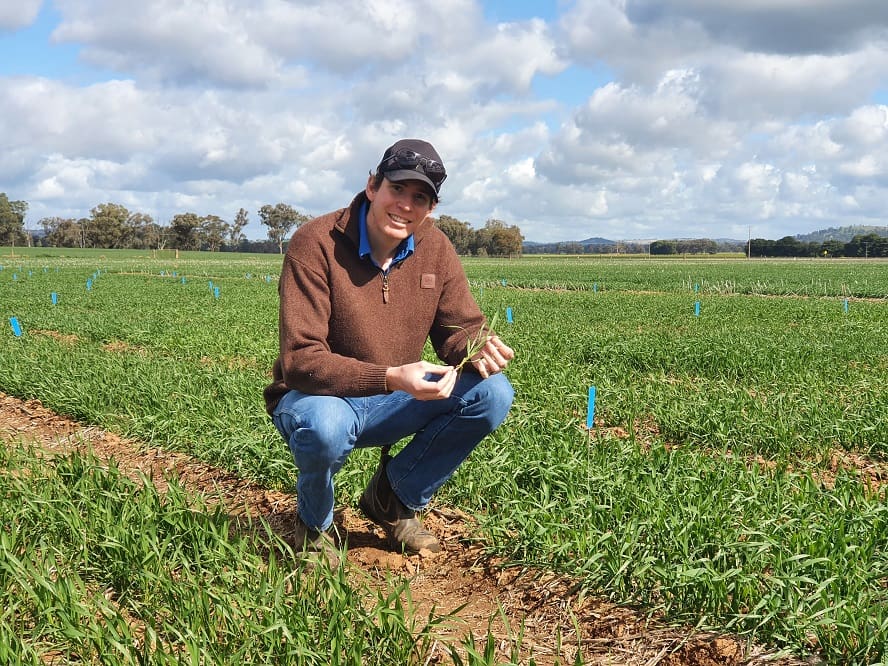
PhD student Timothy Green will compare modern fast-growing wheat varieties with two supplied by the Australian Grains Genebank, Farrer’s Sunset and a variety called Apogee.
WHAT does a wheat variety bred by William Farrer more than 100 years ago have to do with wheat developed to grow in space?
It’s all part of new Charles Sturt University PhD research to understand the characteristics needed in fast-growing wheat that can be sown in winter to help farmers in south eastern Australia adjust to a changing climate.
The research by PhD student Timothy Green, through the Graham Centre for Agricultural Innovation, will compare modern fast-growing wheat varieties with two supplied by the Australian Grains Genebank, Farrer’s Sunset and a variety called Apogee developed by wheat breeders in Utah in conjunction with NASA to grow on the space station.
The Grains Research and Development Corporation Research Scholarship (GRS) recipient said along with understanding the characteristics of fast-growing wheats the research will investigate their value as an option for farmers.
“Farmers in the southern wheat growing regions are experiencing hotter, drier starts to the season which means the traditional autumn break is becoming less reliable and is shifting later in the year,” Mr Green said.
“There’s a need for the development of a wheat variety that can be sown mid-winter when it’s more likely to have better soil moisture but one that’s short-cycling so that it flowers at the right time.”
He said there could also be potential benefits in reduced herbicide use.
“The current trend of sowing longer season wheats early in the season can lead to a reliance on selective herbicides applied during the season,” Mr Green said.
“As a result herbicide resistant weed populations continue to develop and spread across growing regions.
“It’s hoped a shorter season variety would leave more time at the start of the season for double knocks with non- selective herbicides or other non-herbicide reliant weed control strategies such as cultivation.”
He said sowing later in the season may also allow more time for soil amelioration activities such as deep ripping, lime and gypsum incorporation, and fertiliser spreading.
“The addition of a late-sown, short-cycling wheat will not replace traditional varieties, but it will give growers more options, flexibility to double crop and to combat herbicide resistant weeds and other pests and diseases.”
Mr Green is also excited to compare and contrast a diverse range of wheat varieties to identify the optimum characteristics.
“Over 100 years ago William Farrer developed the very fast-growing Sunset wheat for the marginal areas of NSW,” Mr Green said.
“We’ll be comparing that with wheat lines that are currently commercially available, Chinese lines, and up-and- coming high vigour breeding lines.
“Sunset in particular does not contain the dwarfing genes found in nearly all modern varieties and therefore should present comparatively different and interesting physiology and growth patterns.
“It’s also exciting to be working with something developed by NASA for possible use on space stations.”
Source: GRDC
Applications for the 2022 GRDC scholarships close Thursday 30 September. For more information visit: https://grdc.com.au/about/rd-and-e-capacity-and-ability/grdc-research-scholarship or contact [email protected]



HAVE YOUR SAY